This spring, the Palace of Versailles invited wildlife photographer Jérémie Villet to photograph the fauna of Versailles. Accustomed to snow-covered landscapes, in which he captures images of animals against a snowy white background, the photographer and winner of a National Geographic Award in 2019 set out on the trail of the animals at the Palace of Versailles. His work will be presented during an exclusive Instagram broadcast from 5 to 25 June 2022. Photos, a video and a podcast will be shared on our online platforms to give you a behind-the-scenes insight of this project!

Wild Versailles
Jérémie Villet
About the project
The Palace of Versailles is home to a surprising and little-known natural heritage. The palace’s gardens, park and architecture are a haven of peace for animals and promote biodiversity within the estate. Animals are all around us - you just have to stop and look to see them going about their business in all kinds of places: while swallows take up residence in the spaces on the palace facade, a couple of swans establish their domain on the Grand Canal and a common wagtail finds refuge in the Grove of Apollo's Baths. In the early morning or at nightfall, more secretive animals creep out of hiding to let themselves be seen. Foxes, roe deer and pheasants reign in the Great Park while herons, squirrels and dragonflies preside over the Queen's Hamlet.
Jérémie Villet's seasoned eye offers a different way of discovering Versailles, a wild Versailles! This campaign is a way of raising public awareness of the rich and fragile ecosystem that is the estate of Versailles.
Follow the action via photos and videos published on the Palace of Versailles’ Instagram account.
Discover the Instagram account
Biography

© Thomas Garnier
Jérémie Villet has been a wildlife photographer for over 10 years. He grew up on a farm in Yvelines where, with his brothers, he discovered the wildlife near his home. Since a young age he has sought to capture timeless moments in contact with nature in order to share them with others. After stopping his studies, he threw himself with passion into wildlife photography. His long solo expeditions to the coldest regions of the world lead him to snow-covered landscapes in which he uses the whiteness of snow to reveal nature’s purity, as a painter uses paper. Snow erases the superfluous, wipes away the excess and brings out the essential. Jérémie Villet’s photographs have won him numerous awards including Wildlife Photographer of the Year and European Photographer of the Year. He published his first book, titled Premières Neiges, in 2019. At Versailles, Jérémie Villet returns to his first love: the wildlife of his childhood.
Video
Photos
House martins
The swallows at the Palace of Versailles are mainly house martins, thus named because they site their nests under the eaves of houses or on other man-made constructions. They are not very large but are perfectly adapted for flying. They are white underneath and slate blue on top. Their nests are made of mud, which they collect on rainy days in the Palace courtyard.
In this photo, the house martins are flying around the Chapel, where the sculptures of Saint John and Saint Mark seem to be enjoying the air-borne ballet of these little angels!

© Thomas Garnier
Pigeon at dusk
In the light of the setting sun, a pigeon flies above the Grand Trianon.
Jérémie Villet's composition evokes freedom, peace, dreams ! The backlight highlights the elegance of this city pigeon that we no longer look at, because we see it everywhere. Yet here, he gives life to the place, he embodies it. Many pigeons nest on the roofs of the Grand Trianon, in the spring they court each other and parade along the marble facades.
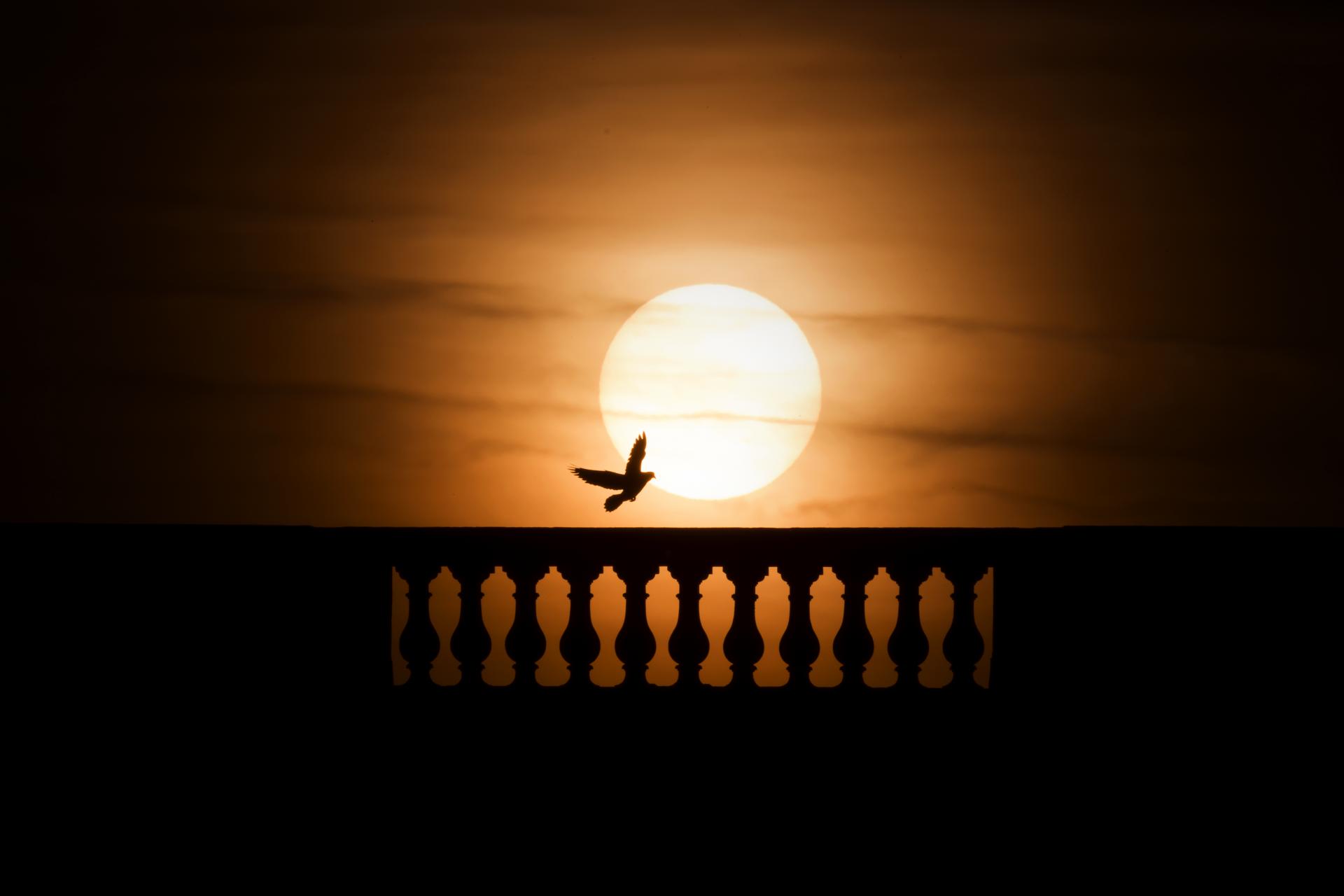
© Jérémie Villet
The Fox
The fox is the mammal that takes the place of men when visitors leave, it is he who walks in the alleys, who stops on the terraces and who visits the interior of the groves. Smart as a fox, they organize their schedules outside ours. In France, they are very hunted and therefore difficult to see.
In the evening, the fox appears, disappears and reappears in the aisles. In this photo Jérémie Villet followed a fox in the night: "He had seen me and accepted me, he was walking, he was stopping, his shadow appeared in the light of the statue".
At night, the fox inhabits the park. Unsuspectingly, animals pass all around the palace. This photo is about that, about that mystery, about the ghosts of the palace.
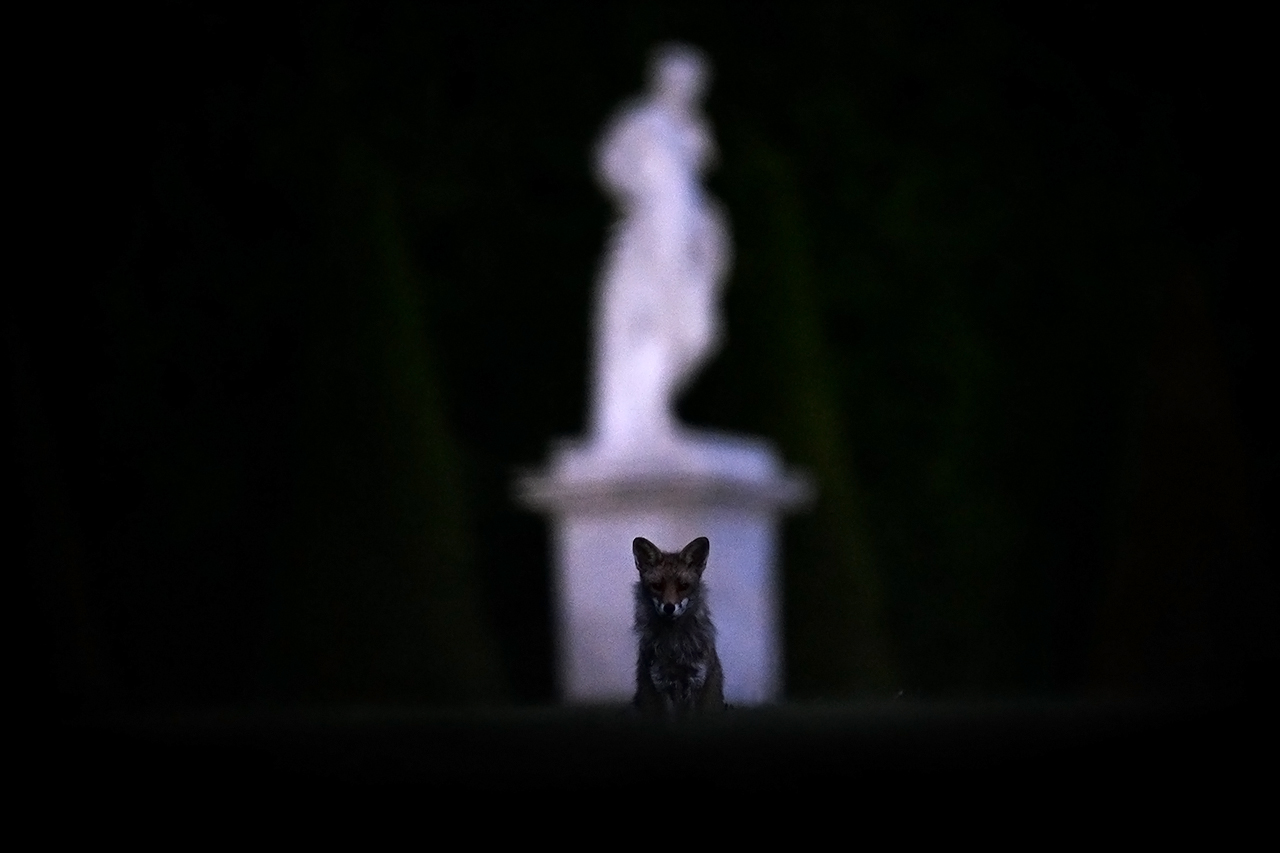
© Jérémie Villet
The pheasant
The pheasant is a species that was imported into France but comes from Asia. It has lived in Europe in the wild for several centuries.
Despite the bright colors of its plumage, it camouflages itself very well and flattens itself on the ground to disappear and hide. At night, it sleeps in the top of the trees to shelter from predators. In spring, the male parades and utters a singular call at regular intervals to mark his territory. The pheasant hen is distinguished by a more discreet plumage, bronze, cream and brown. During laying and brooding, it remains hidden, out of sight and out of danger.
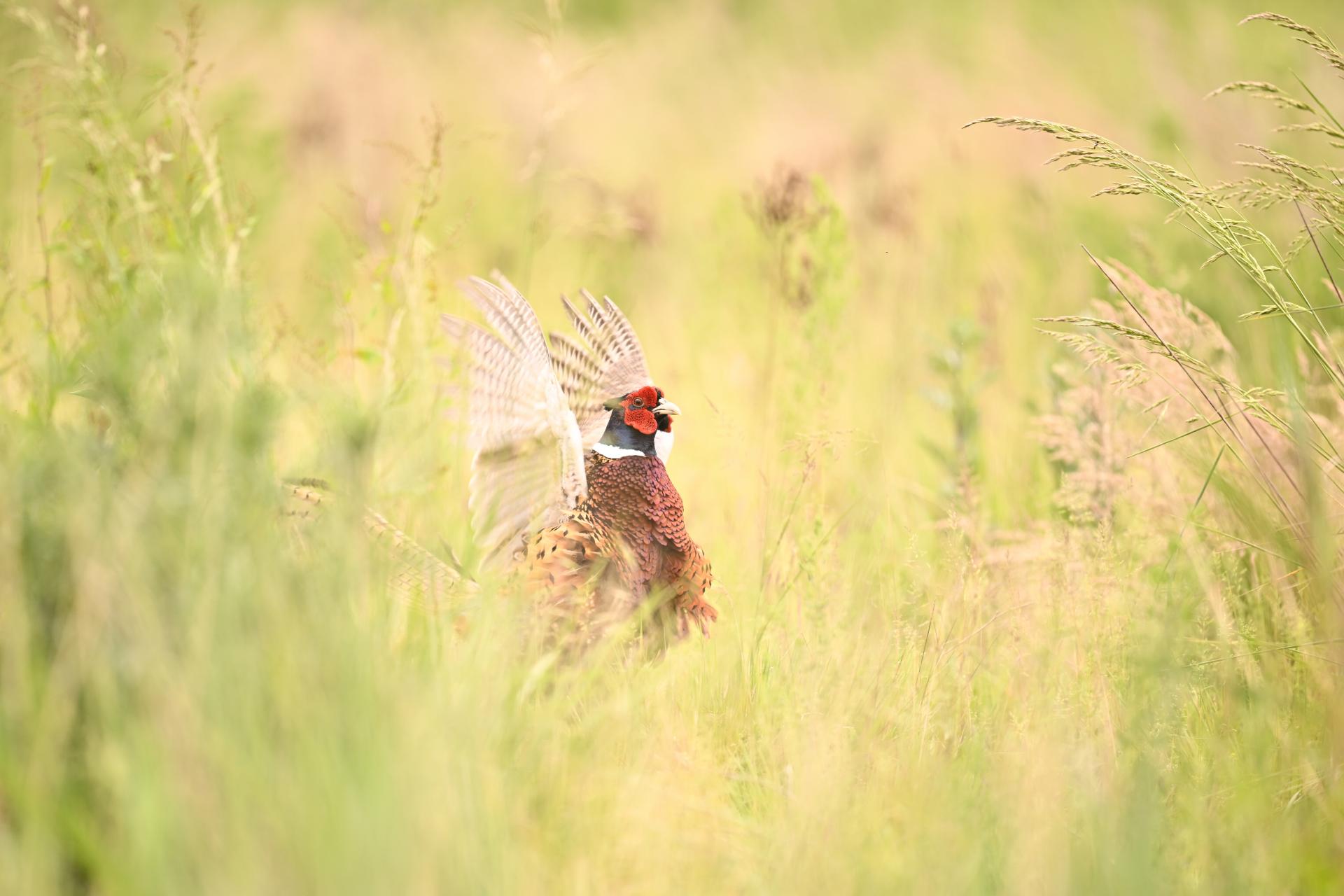
© Jérémie Villet
The Swans
During the reign of Louis XIV, many swans were imported from Asia to "decorate" the pools and thus please the courtiers. The swan is a symbol of love in all the arts of the time, as the animal is monogamous and remains in a pair for its entire life with the same individual. When the two adults court each other, the curve of their necks forms a heart.
Swans are very territorial animals. They can live in pairs in a huge area which they guard without sharing. In the park of Versailles, the Grand Canal is controlled by our two swans, they look like princely owners. They chase barnacle geese that venture onto their domain and protect their young.
In this image, Jérémie Villet ]] captures the whole family proudly parading on the Grand Canal. Indeed, at the end of April, three little balls of feathers came to join our royal couple! In spring, the park and gardens of Versailles are a haven of peace for the birth of many species.

© Jérémie Villet
The Mandarin duck
The Mandarin duck comes from the Far East, east of Asia and Siberia. It is a rare species in France, they are sometimes seen in farms, they are adopted as ornamental ducks. Some escape and now live in the wild.
A pair of mandarin ducks regularly comes to the park of Versailles. In this photo taken at the Bassin du Trèfle, Jérémie Villet immortalises the flight of this exotic animal.
"The vegetation in the foreground gives a particular texture to the image, this photo looks like a painting or a tapestry as they were represented at the time".

© Jérémie Villet
The dragonfly
Near a pond, the light of the dew is reflected in its wings as if through a stained glass window. With its delicate colours, the graphic patterns on its body and its ballet-like movements above the water, the dragonfly embodies amazement. In this photo, Jérémie Villet captures it flying, as he wished to represent it, and as we encounter it. Yet it is difficult to photograph a dragonfly, "its lively movements make it difficult to focus on". But when you observe it carefully, you can identify points to which it returns meticulously. Motionless for a second, in the park or near the Ru de Gally, it calls out to our childlike soul.
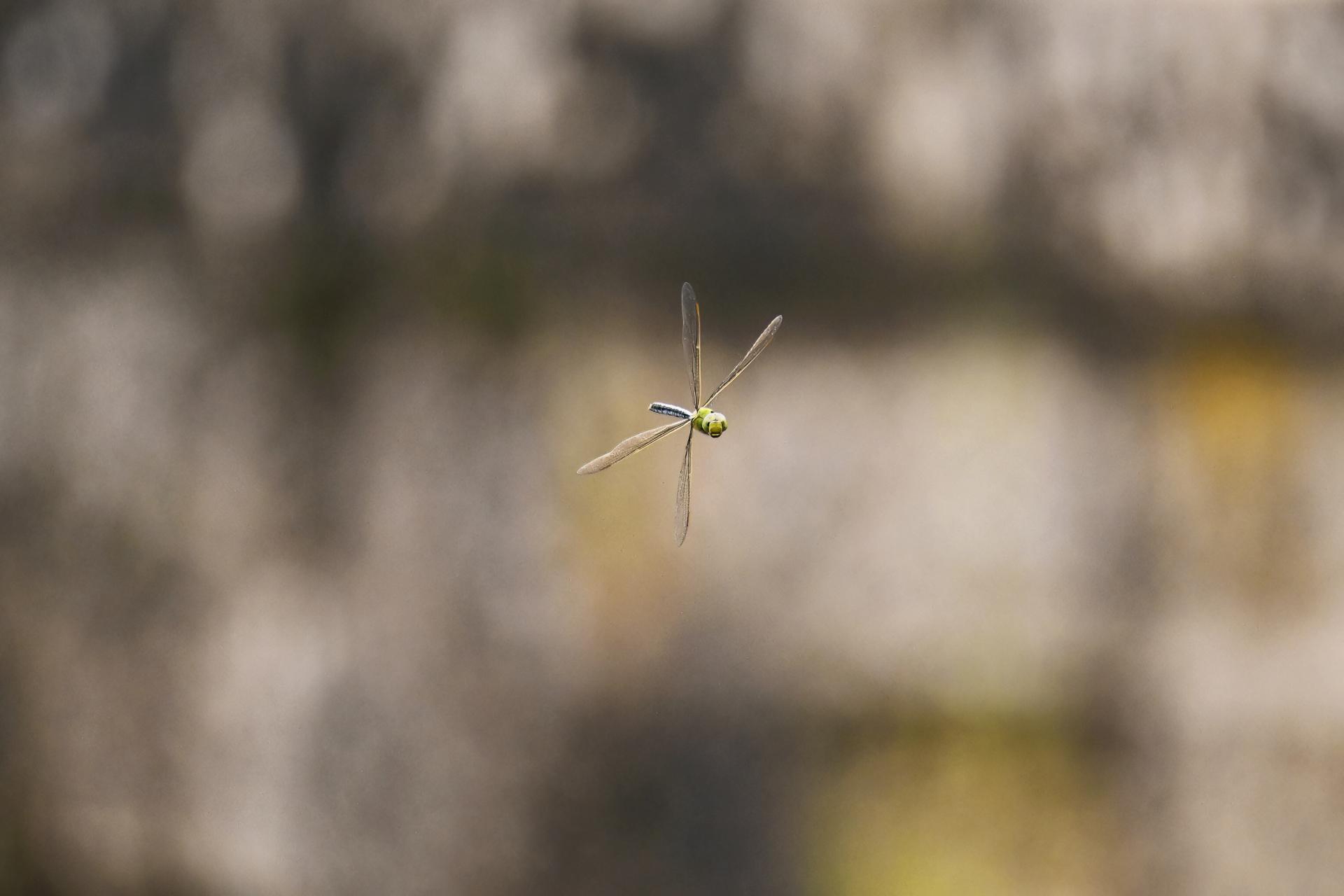
© Jérémie Villet
Swallows prepare their nest
The window swallows make their nests with the mud they collect on stormy evenings on the palace grounds.
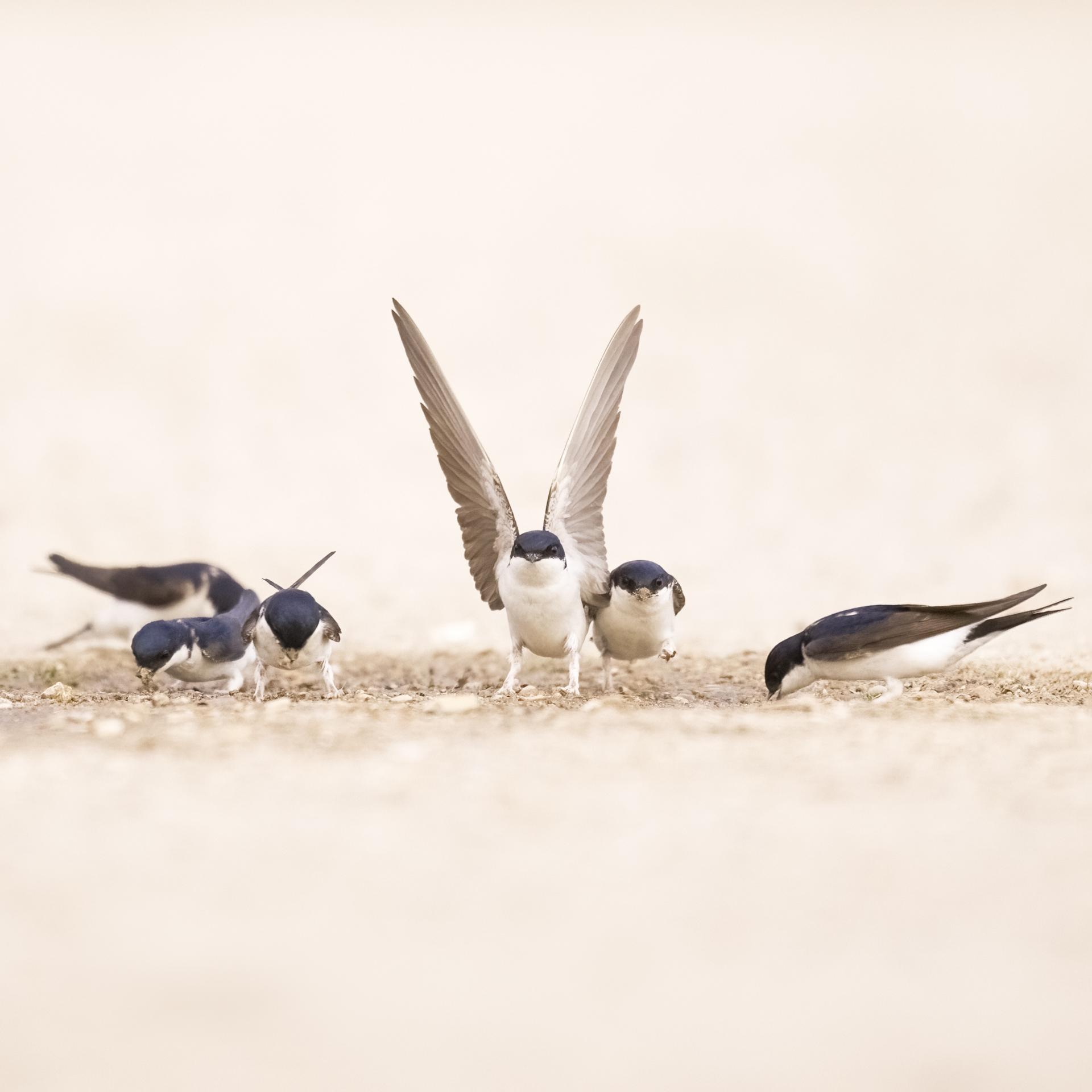
© Jérémie Villet
The vixen
She frantically roams the Grand Parc in search of her prey. In the tall grass, she leaps without sparing any effort. In this photo, the fox is revealed to us in the perspective of the Saint-Cyr alley. Her tender gaze and the little blade of grass on her nose testify to her apparent innocence. The presence of the photographer Jérémie Villet captured her attention, a fleeting face to face, a beautiful encounter!
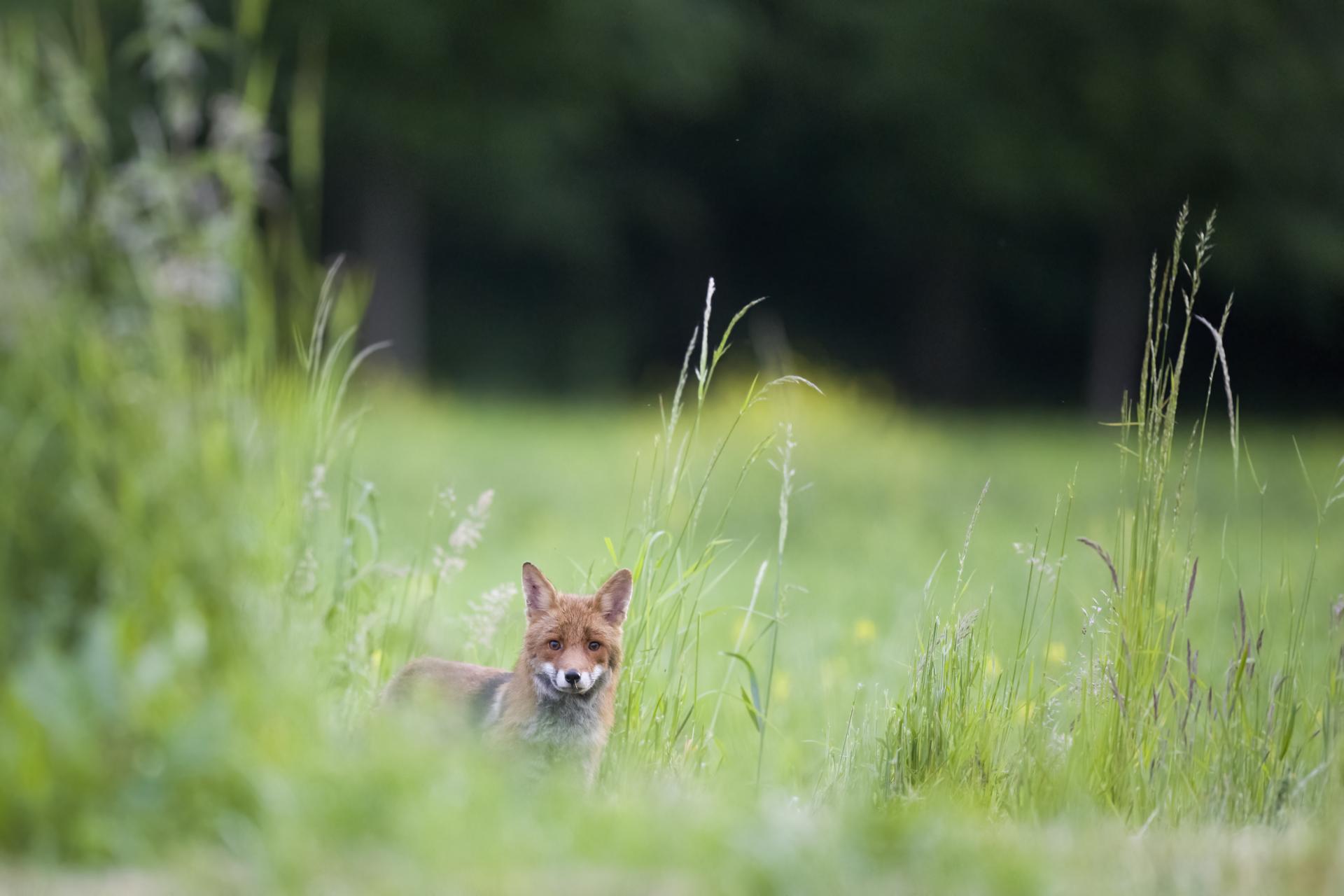
© Jérémie Villet
The swans
Do you know the story of the ugly duckling, which was in fact a baby swan?
The baby swan is a small greyish fluffy animal, unlike the little duckling which is yellow. During its first days, the beauty and cuteness of this little creature is unanimously appreciated.
As its feathers moult, it metamorphoses into a huge bird with snow-white plumage.

© Jérémie Villet
The crow
In the collective imagination, crows do not have the best of feelings. They are black, they evoke death, fear and evil. They owe their bad reputation to the fact that they feed on carrion (rotting corpses), yet this bird is undoubtedly the most intelligent animal that one can come across at the Château de Versailles.
They are very territorial and very respected or feared, other birds leave the grounds when they arrive. They can see 8 times better than we can, they are observant birds, they look you in the eye, they analyse their environment and to do this they develop a taste for perches. It is a cleaner of nature, an ally whose silhouette is magnified here by Jérémie Villet's photography in the light of sunset.

© Jérémie Villet
The sparrow
The sparrows remind Jérémie Villet of his childhood spent on his parents' Yvelinoise farm. The young photographer remembers that he saw a lot of them at the time because sparrows are granivorous (they eat seeds). Today, it has become rarer to see the little bird in towns abandoned by agricultural activity. At Versailles, they eat the visitors' food, the little crumbs. They are found around the facade of the castle and near the places of restoration.
He is a very endearing animal who does not hesitate to come near us, he is very restless, very restless, but very tender. In this photo, the sparrow is placed on a bronze sculpture and the character, Silenus, looks at the bird with the same tenderness that he addresses to the child Bacchus.

© Jérémie Villet
A gray wagtail
In the cave of the grove of the Apollon baths, nests a surprising yellow bird, a gray wagtail, which has found refuge in this place which perfectly reproduces its natural ecosystem.
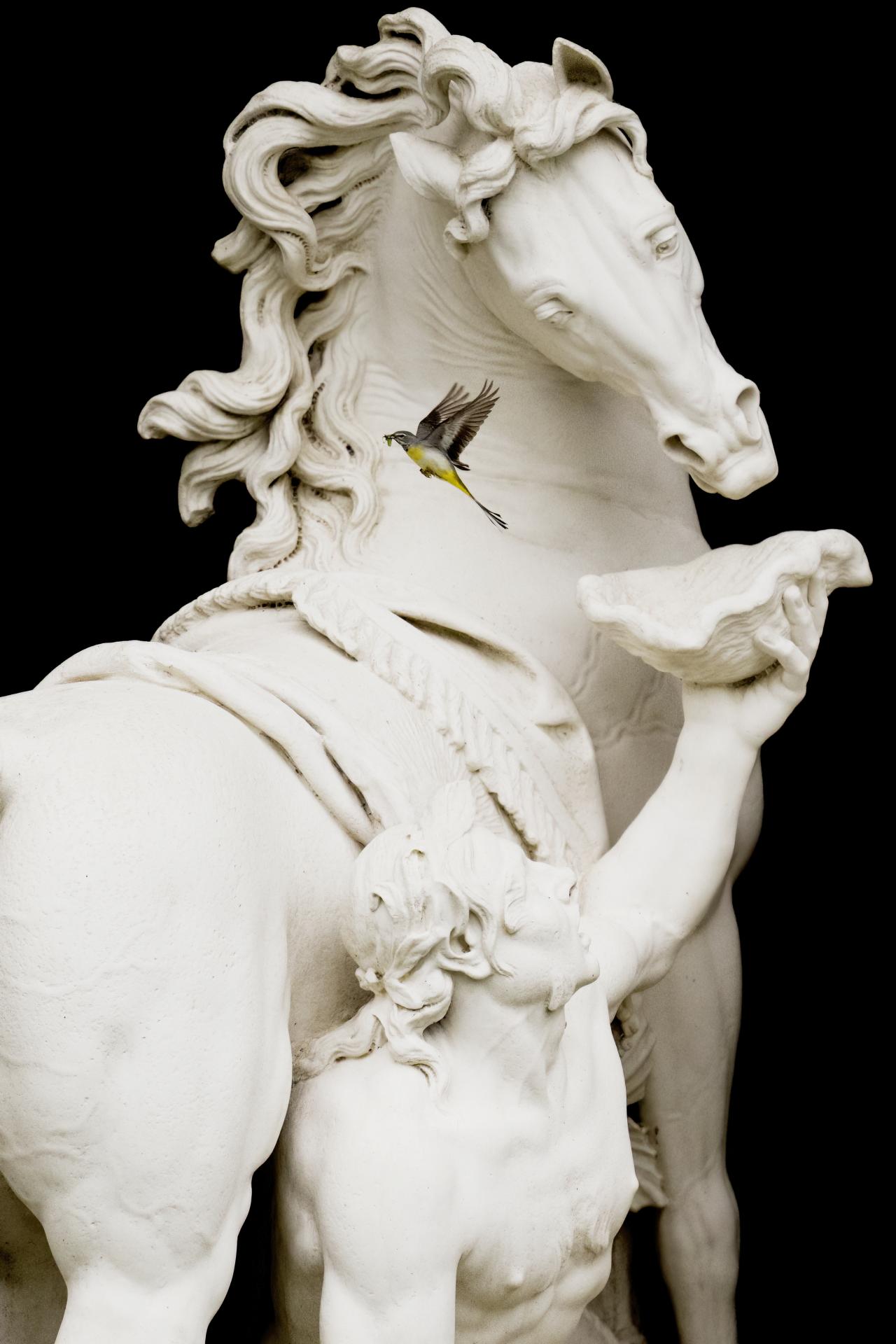
© Jérémie Villet
Pierregarin terns
Pierregarin terns usually live on rivers or by the sea. It is surprising to see them in Versailles, but they have found in the Grand Canal a unique fishing ground that corresponds to their usual ecosystem.
On the evening of this photo, a couple of terns were hunting in the light of the setting sun. The female landed on the head of Apollo's chariot, the male came to parade around her, opening his wings wide and bringing her offerings of fish. This love parade is a guarantee of its good physical shape and its ability to feed its future offspring.

© Jérémie Villet
The goldfinch
This little bird is called the goldfinch. Elegant, it lives up to its name, because its very refined plumage has many colors: red, yellow, brown, black and white. In the gardens of Versailles, this multicolored plumage camouflages it perfectly as it spends its time in the flowerbeds looking for seeds. It is spotted thanks to its melodious song and its swaying flight. In the air, its trajectory rises and falls to the rhythm of its flute whistles.

© Jérémie Villet
Wood pigeons
Wood pigeons lived in the countryside, but they settled well in Île de France and in the park of Versailles. In winter, thousands of woodpigeons settle in the large trees of the domain. It's a common but very elegant bird, and "if it were rarer, we would value it much more and we could travel far and wide just to see it," says wildlife photographer Jérémie Villet ]]. He is powder pink in color with blue tints, areas of shine, a white patch on his neck, and he moves with a proud and precious air. In the evening, a hundred of these costumed pigeons invest the royal court deserted by visitors, for a private party where, as you can see in this image, there is no shortage of courtship at Versailles.
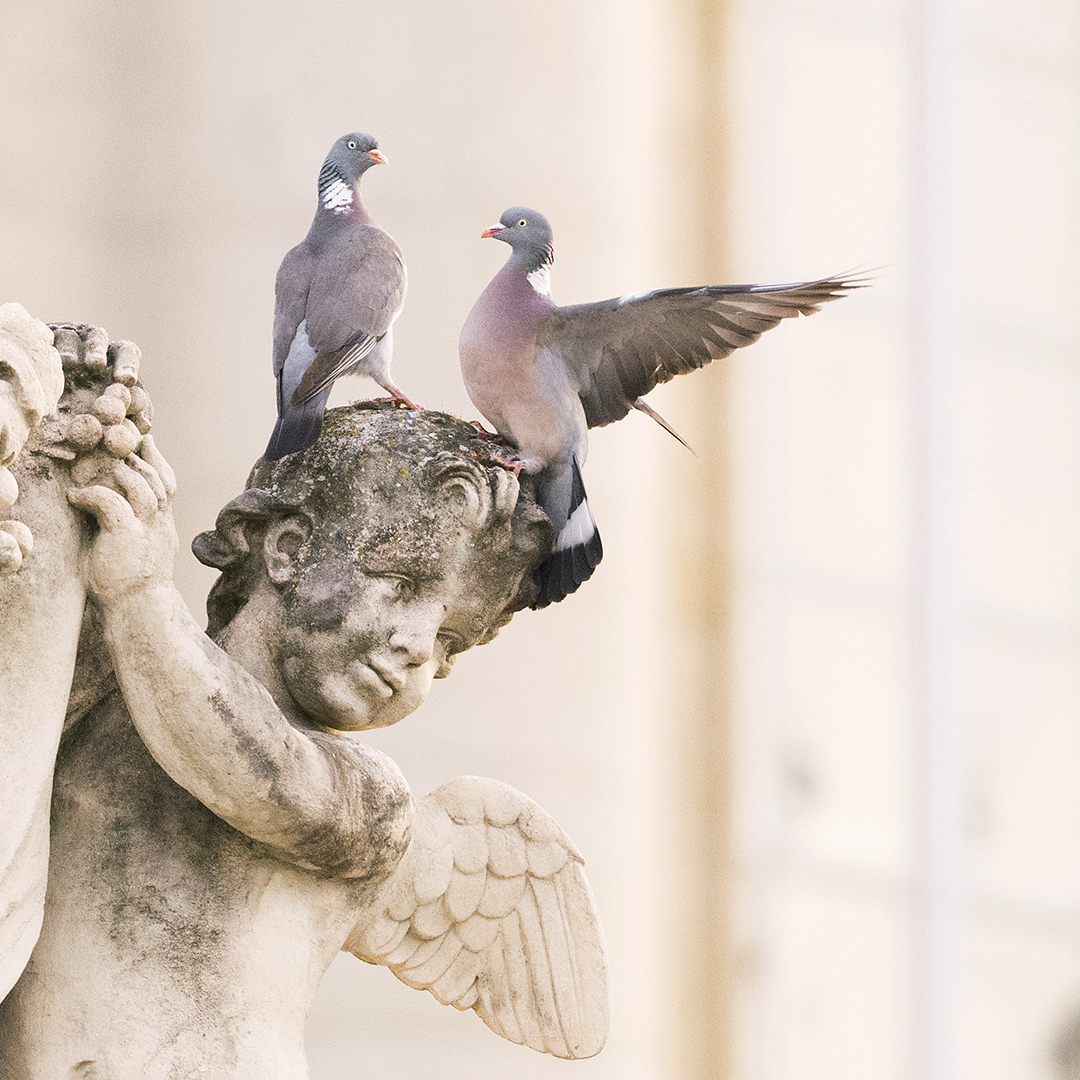
© Jérémie Villet
The deer
The deer is the largest mammal in the park, yet it is the most discreet. It's a shadow, a rustle in the forest, a mysterious ghost, a legend. This invisible animal fascinates by its absence. An employee of the castle confided to us "I have worked here for 10 years and I have never seen one". Some say they have seen it, others that it is not possible. There would be two, three, or none, they were seen at the Royal Star early in the morning, or late at night in the belt aisle. Jérémie Villet says: "At 5:30 am in the glow of the night, I saw the silhouette of the brocade crossing the perspective and I saw it again one morning sneaking through the mist without managing to take a photo with the castle background. This failed quest lived in me, I couldn't stop thinking about it, I stayed for hours in my lookout hoping for it without seeing it. On the last morning of my mission to Versailles, June 1, he did not pass through the mist but on the way back, like an apparition, I saw his two antlers protrude from the barley field. »
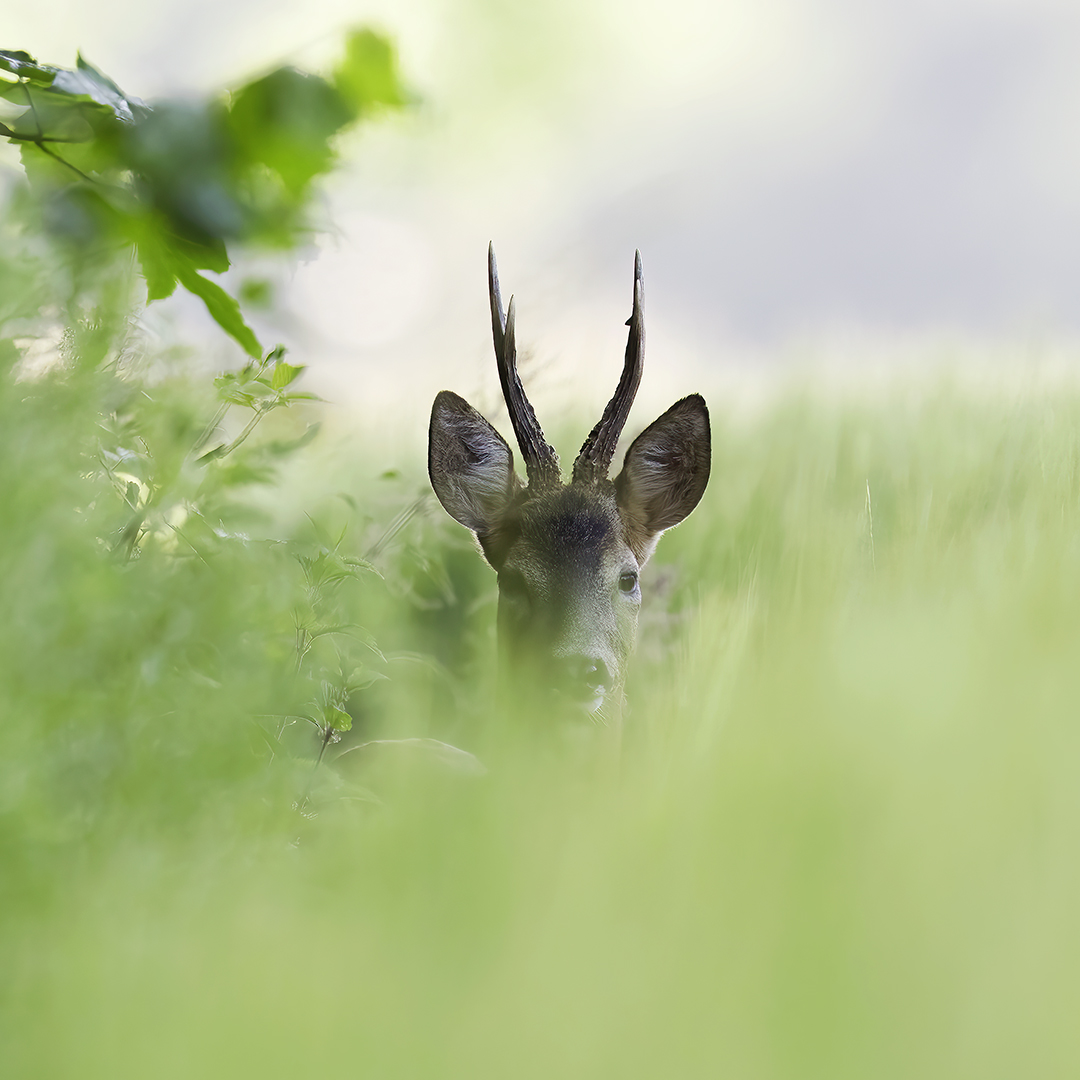
© Jérémie Villet
The swallow
Jérémie Villet captures a swallow's bath.

© Jérémie Villet
The mallard duck
The mallard duck is certainly the best known and most widespread of all ducks. During the nuptial period the males sport a green head with shiny feathers and blue highlights, hence its name. Many mallard ducks have taken up residence on the estate of Versailles.

© Jérémie Villet
Pierregarin tern

© Jérémie Villet
European hare
While strolling early in the morning or in the evening, you may be lucky enough to see a European hare. This big shy is difficult to observe, but in the spring its courtship behavior makes it more daring and it sometimes shows itself in broad daylight. This photo was taken by Jérémie Villet at daybreak on the royal star lawn.
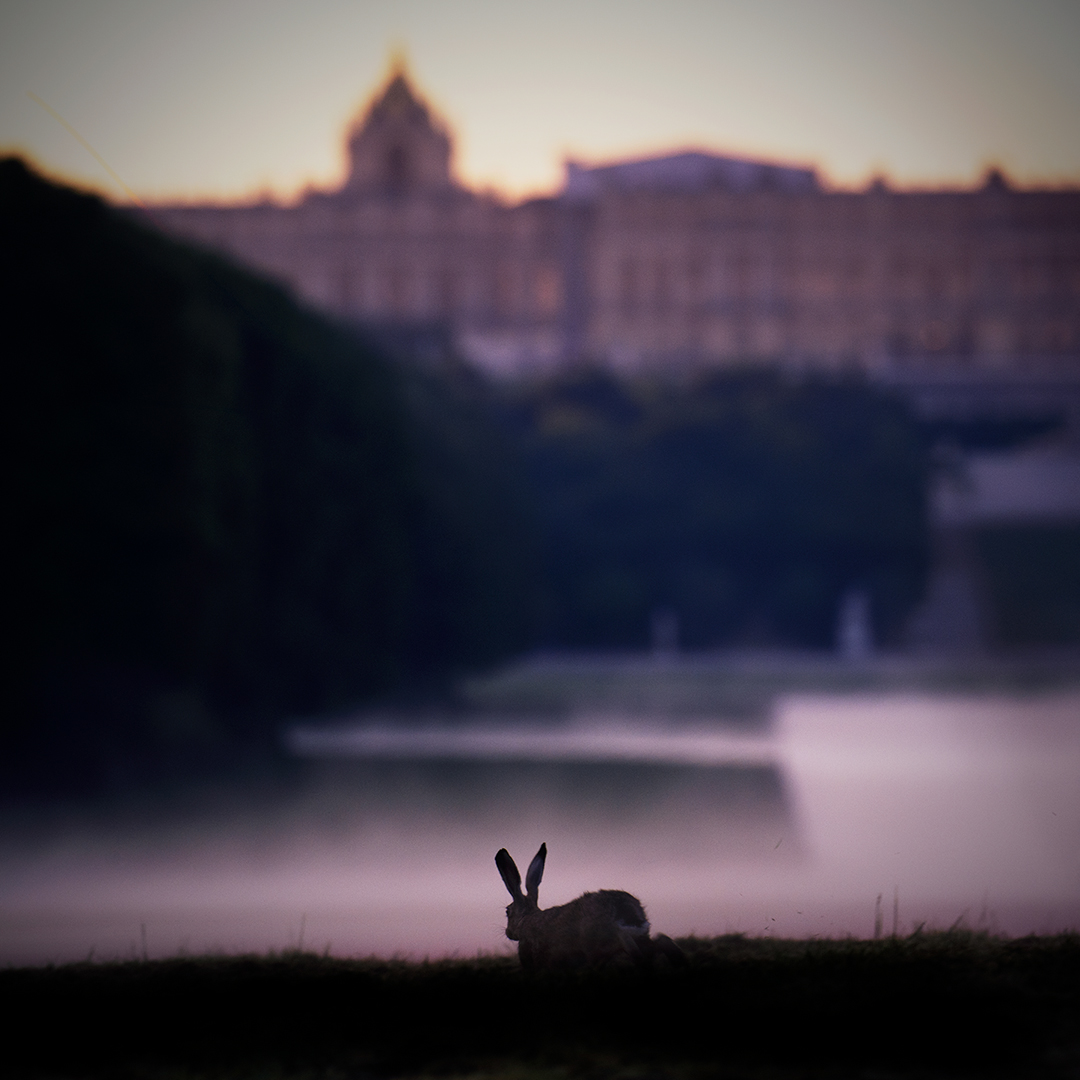
© Jérémie Villet
The goldfinch
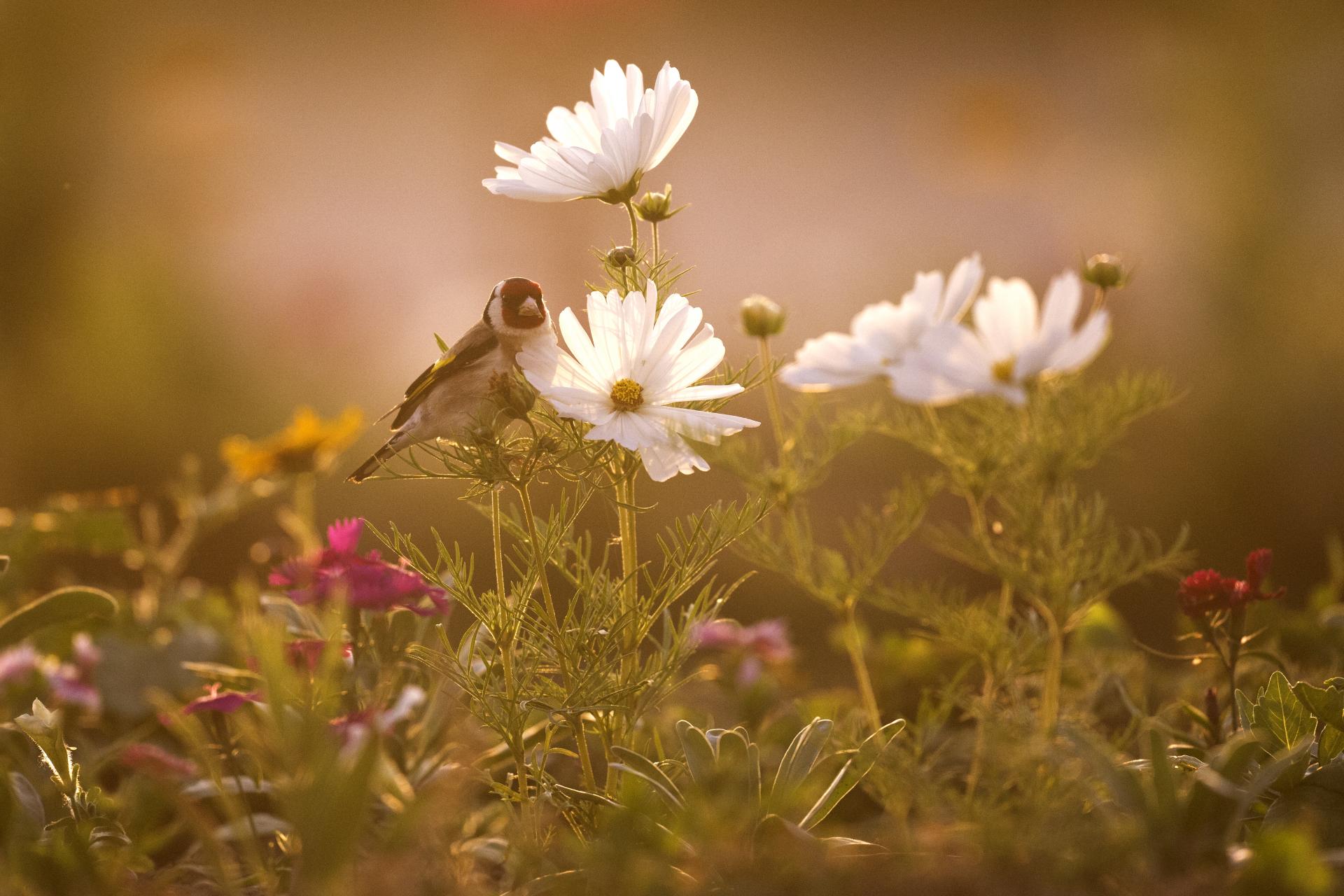
© Jérémie Villet
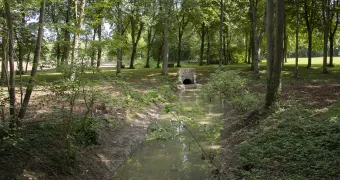
The Ru de Gally Stream
The stream of the Ru de Gally runs from its source in the Grand Canal and across part of the Park, revealing the incredible biodiversity of the Estate of Versailles.





